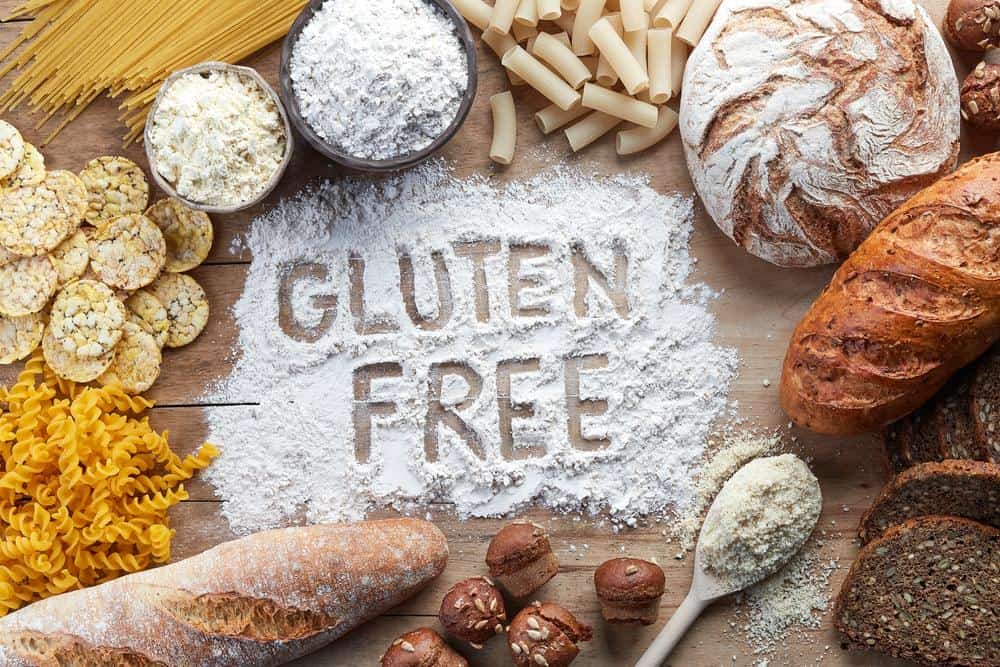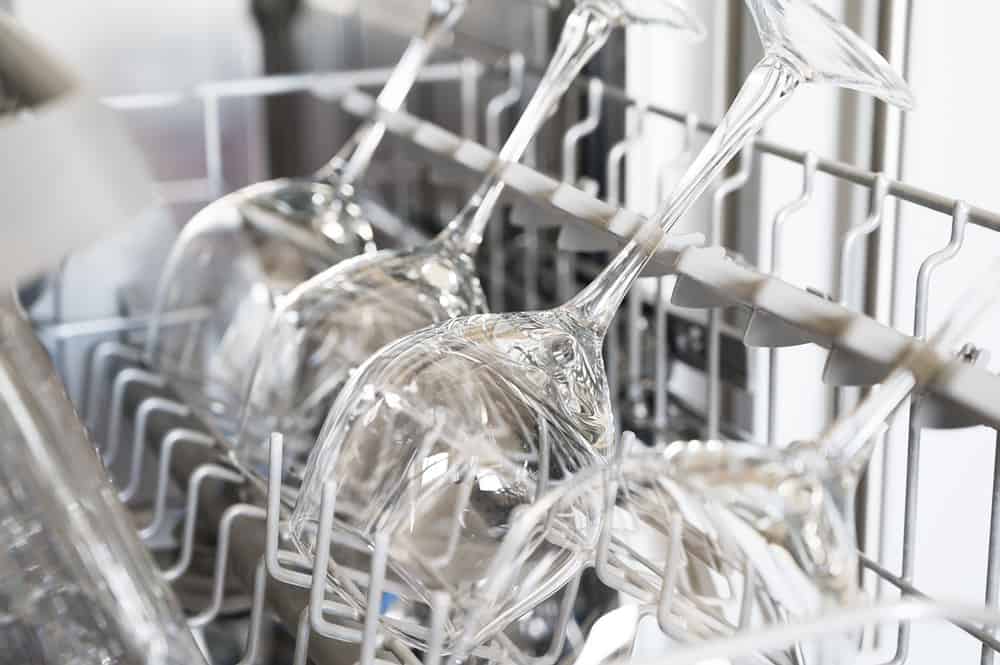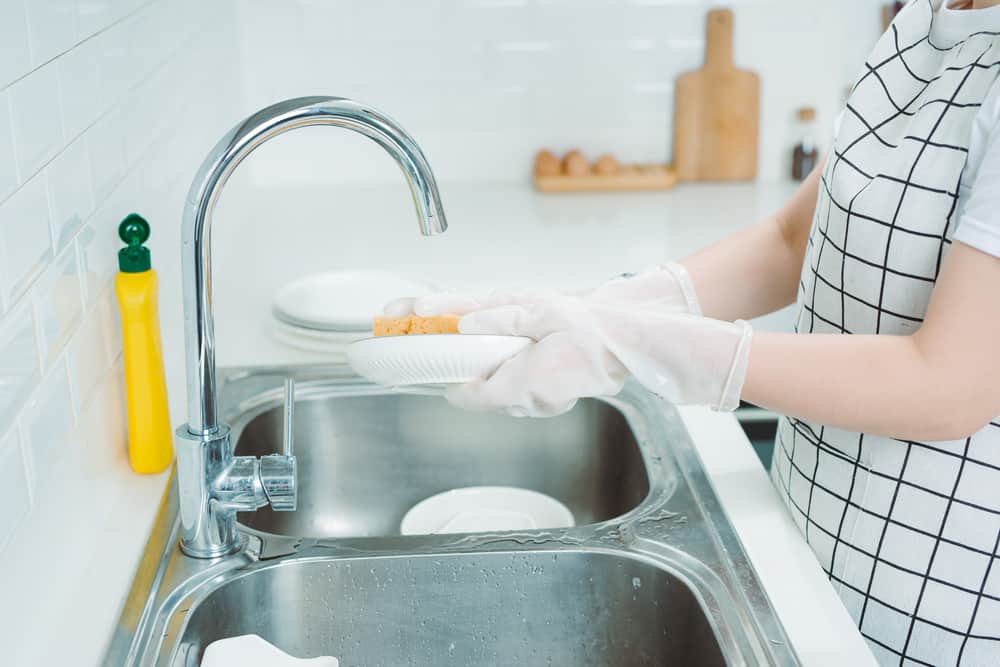Celiac disease is no joke, and one of the significant concerns of people that have it, or people with loved ones that do, is getting rid of the gluten on dishes to avoid cross-contamination. Unfortunately, cross-contamination can happen incredibly easily, and in ways you might not expect.
So does a dishwasher get rid of gluten on your dishes? The short answer is no, a dishwasher is not thorough enough to get rid of gluten on its own, and you should give an in-depth hand washing to any dishes that have been exposed to gluten before anyone with celiac disease eats off of them.

Dishwashers don’t specifically eliminate gluten
The dishwasher can potentially have a hand in this, but risks are also involved. We've done the research and compiled the critical information you need to know about this topic. So let's unpack what all of this means and what you should actually be doing to make sure your dishes are celiac safe.
Nowadays, many people try to avoid gluten-containing food, such as pasta, bread, biscuits, and cereals, as part of weight loss. For those people, trace amounts of gluten will not be a problem. It is not as essential for them to avoid it as for those with celiac disease.
Celiac disease is an autoimmune disorder that causes the body to attack the small intestine whenever it tries to digest gluten. Your immune system identifies gluten as a threat to your health and produces antibodies that create inflammation on the surface of your intestine. Even trace amounts can trigger a bad outcome and eventually lead to the development of cancers in the digestive system. People with celiac disease need to stick to a gluten free diet.
This food allergy is highly genetic, so if one person in a house has it, there will probably be others with the disease as well. They need to be consuming only gluten free food.
That makes keeping your dishware gluten free a priority. The best way to do this is simply not to have gluten in the house, but given all the foods and even beverages that contain it, that isn't always easy.
Gluten is not a bacteria, but a protein, so hot water will not 'kill off' gluten; it can even survive in the fires of an outdoor grill. This protein is the connective tissue that holds wheat, ryes, and oats together, so you can't just sear it away as you might do with salmonella.
Bacteria work by infecting a person and multiplying, whereas gluten provokes an allergic reaction to the ones who are intolerant to it. You wouldn't burn peanuts out of a dish, and thus it doesn't work on gluten either. The traces will still be there and have to be scrubbed away by an uncontaminated cloth.

A dishwasher is great at cleaning and sanitizing dishes - but can’t remove gluten
However, no matter how hard you try, some cross-contamination may happen. So, it's crucial to try to minimize exposure wherever you can. All of the dishes in the dishwasher share the same water. Putting an uncontaminated dish in with a contaminated one will fail to cleanse the contaminated dish and most probably contaminate the safe one.
Similarly, even if you are hand-washing your dishes, it's important not to wash a safe plate in the same water as a contaminated one, as this too can lead to cross-contamination.
The dishwasher alone is not enough, though we recommend using it to rinse your gluten-free dishes after hand-washing them thoroughly. Just, not in the same load as contaminated dishes.
Clean tools, a clean sink, and clean water are all vital to decontaminating a dish to make it safer for a person with celiac disease to use.
If just putting your dishes in the dishwasher isn't enough, how can one maintain gluten-free cookware? And if you need to cleanse the gluten from a plate you know has already been contaminated, how do you do it?
There are a few simple steps to follow.
First, make sure you remove all of the crumbs and food from the dish before you ever get it wet. This means crumbs, clinging bits of condiment, anything you could classify as being stuck on the plate.

Hand washing dinnerware and drinkware is the key to eliminating gluten
Second, hand-wash the dish. If you know the plate has been contaminated by gluten, you will want to use a disposable rag. Having this precaution is vital because, after using a rag to clean a dish, you won't be able to use it again on a gluten-free dish without risking cross-contamination. Paper towels might not be the best for the environment, but in a case like this, you can safely throw them away without worrying someone will use them again on another dish.
Third, rinse the dish by hand. After that, we recommend you rinse it again through the dishwasher. If you have a sanitizing solution, that's even better than just using dishwasher detergent because you aren't risking contaminating the dish with the rack in the dishwasher.
Finally, either dry the dish with a cloth that has never been in contact with a gluten dish or let it air dry.
If that sounds like a lot, that's because it actually is. Cross-contamination can happen incredibly easily, and the only real way to mitigate it is to practice vigilance and not skip steps in food safety preparation.
So, if you do have a loved one with celiac disease, you may be wondering how to make sure none of the gluten on your dishes is cross-contaminated. We’ve already said that it's impossible to avoid trace amounts of gluten. It's in everything. But the more exposure there is, the worse it will be, so it is vital to limit exposure as much as possible.
Preventing gluten cross contamination in the kitchen
The safest way to accomplish this is simply not to have gluten in your kitchen at all, but this isn't realistic for most households. So what could you do?
Below you will find some helpful tips to avoid gluten cross-contamination.
Make sure any non-celiac resident in your home knows which food is yours! Put colorful labels on the gluten-free food in the refrigerator and make sure that they understand how important it is not to open your containers.
Most people use plastic containers to store their food, so ensuring everyone knows which ones belong to whom is vital to avoid accidents.
Make sure all of your dishes are plastic or glass! Wood is porous and contains all kinds of invisible places for gluten to get down in, and be nearly impossible to get back out again. Meanwhile, hard plastic or glass is far more possible to clean thoroughly.
This includes wooden plates and bowls but also mixing spoons and tongs. One of the biggest points to this is eliminating the risk of cross-contamination, and things like spoons that touch multiple dishes, sometimes within the same meal, are a higher risk than most items.
You should also avoid sharing cooking equipment, pots, and pans. However, pans made of stainless steel or solid aluminum that don't have a nonstick coating can even be shared between gluten and gluten-free items if you wash them thoroughly between uses.
Separating an area of the kitchen that no one else is allowed to use might sound over the top, but cross-contamination is as easy as touching the same surface. A small counter space just for you is an excellent way to make sure you don't end up with any gluten from someone else's dish in your food.
However, even if you are doing this, it is a good idea to scrub down everything. It's possible to be contaminated by airborne flour, so food particles on a countertop are a genuine concern. Flour can stay airborne for 12-24 hours, depending on ventilation and flour quantity. If there’s a possibility of flour or gluten particles in the air, it’s best to avoid those areas for the next 24 hours, as inhaling airborne gluten can be dangerous.
And by tools, we mean everything you use to prepare food and clean your dishes. For example, you should have a separate toaster because the high temperatures used to toast things will bake the gluten in, thus contaminating it.
It doesn't end there, however. It's also a good idea to keep separate sponges and dishrags for doing your dishes. Make sure your own sponges and rags are a vibrantly different color or stored out of the way.
There might end up being trace amounts of gluten in the sink itself, but this can be mitigated by a careful scrubbing between loads of dishes. Rags and sponges, however, are incredibly porous by nature, and there is no cleaning them enough to prevent cross-contamination.
